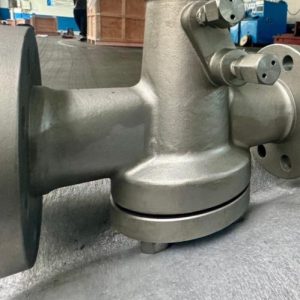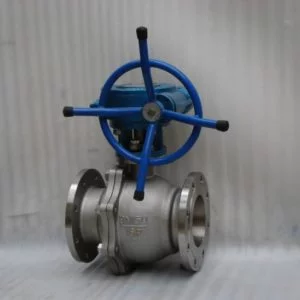Our Shop
Contact us for all your questions and requirements
FLOATING BALL VALVE SUPPLIERS IN GERMANY
Valvesonly Europe is the largest Floating Ball Valve suppliers in Germany. A floating ball valve is a type of quarter-turn valve used to regulate the flow of fluids through a pipeline. Its name originates from the floating design of the ball within the valve chamber. The ball, typically made of metal such as stainless steel, floats between two seats under the pressure of the fluid.
When the valve is open, the ball is free to move within the chamber, allowing fluid to pass through. Upon closure, the ball is pressed against the downstream seat, creating a tight seal and preventing any leakage.
Difference Between Floating and Trunnion Ball Valve:
While both floating and trunnion ball valves serve similar purposes, they differ in their construction and sealing mechanisms. The primary distinction lies in how the ball is supported within the valve.
In a floating ball valve, the ball is not fixed to the valve body but instead floats between the inlet and outlet seals. This design is suitable for low to medium pressure applications and offers excellent sealing capabilities.
On the other hand, trunnion ball valves feature additional mechanical anchoring of the ball, typically through a trunnion mechanism or bearings. This design provides greater support and stability, making trunnion ball valves ideal for high-pressure or high-temperature applications.
Floating Ball Valve Sealing Principle:
The sealing principle of a floating ball valve relies on the pressure of the fluid to create a tight seal between the ball and the valve seats. When the valve is in the closed position, the upstream seat forces the ball against the downstream seat, creating a reliable seal that prevents leakage.
The sealing mechanism is further enhanced by the use of resilient materials for the valve seats, such as reinforced PTFE or elastomers. These materials ensure tight sealing even under varying pressures and temperatures, making floating ball valves suitable for a wide range of operating conditions.
Feature Structure:
Floating ball valves are renowned for their robust construction and innovative features that enhance performance and reliability. Here are some key structural features commonly found in floating ball valves:
Two-piece or three-piece design for easy maintenance and repair.
Full or reduced bore options for maximum flow capacity or critical flow control applications.
Fire-safe design with special materials and sealing mechanisms for enhanced safety in extreme conditions.
Anti-static devices to prevent static electricity buildup in hazardous environments.
Blowout-proof stem design ensures continuous operation and safety under pressure.
Manual or automated actuation options for versatile control capabilities.
Floating Ball Valve Manufacturer in Germany offering reliable performance, tight sealing, and versatility across various industries.
Description:
Body Material: Stainless steel, brass, or other metals, Cast Steel (WCB, WCC, WC6, WC9), Cast Iron, SS316, SS304, Forged Steel (F22, F51, LF2, F304, F304L, F316, F316L)
Size:1/4’’ to 48’’
Class: 150-2500; PN 10-PN 450
Ends: Buttweld, Flanged, Socket weld, Threaded
Operation: Gear operated, Electric actuated, Lever-operated, Pneumatic actuated.
Showing all 2 results










